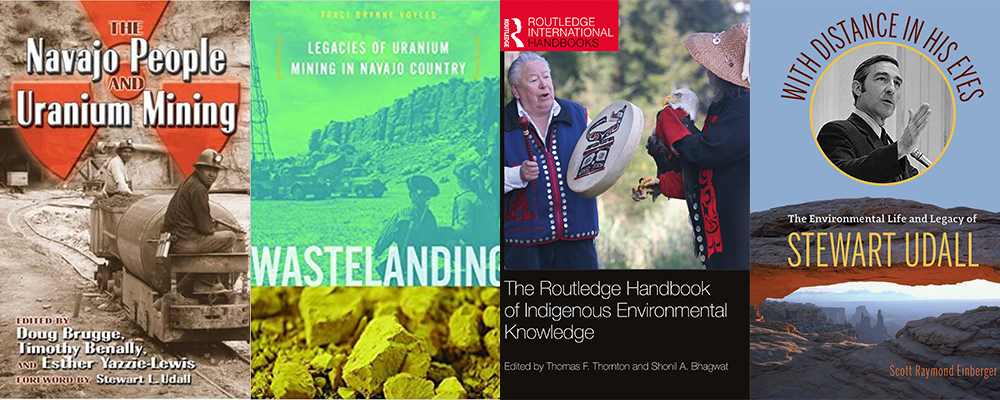Wild Reads: Navajo Nation and the environment

In recognition of Native American Heritage Month, Chemistry, Geosciences and Environmental Studies Librarian Emily Wild recommends the following books on the topic of the Navajo Nation and the environment.
The Navajo People and Uranium Mining
In the early 1940s the Navajo Nation was in the early stages of economic development, recovering from the devastating stock reduction period of 1930. Navajo men sought work away from the reservation on railroads and farm work in Phoenix and California. Then came the nuclear age and uranium was discovered on the reservation. Work became available and young Navajo men grabbed the jobs in the uranium mines.
A team of Navajo people and supporters began the Navajo Uranium Miner Oral History and Photography Project from which this book arose. That project team, based at Tufts University School of Medicine in Boston, recruited the speakers who told their stories, which are reproduced here.
Wastelanding: Legacies of Uranium Mining in Navajo Country
Wastelanding tells the history of the uranium industry on Navajo land in the U.S. Southwest, asking why certain landscapes and the peoples who inhabit them come to be targeted for disproportionate exposure to environmental harm. Uranium mines and mills on the Navajo Nation land have long supplied U.S. nuclear weapons and energy programs.
By 1942, mines on the reservation were the main source of uranium for the top-secret Manhattan Project. Today, the Navajo Nation is home to more than a thousand abandoned uranium sites. Radiation-related diseases are endemic, claiming the health and lives of former miners and nonminers alike.
The Routledge Handbook of Indigenous Environmental Knowledge
This volume provides an overview of key themes in Indigenous Environmental Knowledge (IEK) and anchors them with brief but well-grounded empirical case studies of relevance for each of these themes, drawn from bioculturally diverse areas around the world. It provides an incisive, cutting-edge overview of the conceptual and philosophical issues, while providing constructive examples of how IEK studies have been implemented to beneficial effect in ecological restoration, stewardship, and governance schemes.
With Distance In His Eyes : The Environmental life and legacy of Stewart Udall
One of America’s most significant architects of conservation and the environment, Stewart Udall, comes to life in this environmental biography. Perhaps no other public official or secretary of the interior has ever had as much success in environmental protection, natural resource conservation, and outdoor recreation opportunity creation as Udall.
In a day and age of partisan politics, poor congressional approval ratings, and global warming and climate change, this captivating biography offers a profound and historical record into Udall’s life-long devotion to environmental issues he cared about most deeply—issues more relevant today than they were then.
Published November 12, 2021
Compiled by Emily Wild, Chemistry, Geosciences and Environmental Studies Librarian
Media Contact: Barbara Valenza, Director of Library Communications
Newsletter
Subscribe to Princeton University Library’s e-newsletter for the latest updates on teaching and research support, collections, resources, and services.
